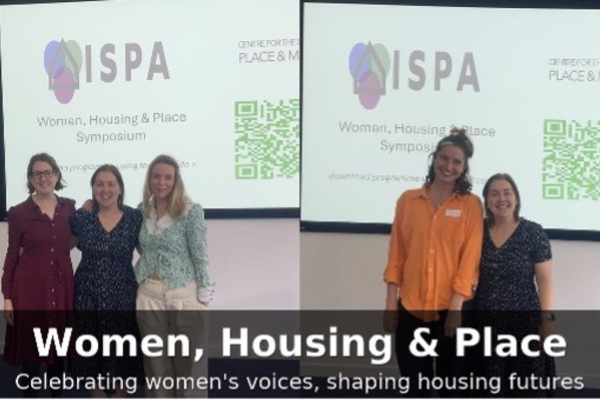
Dr Kim McKee is a Senior Lecturer & Programme Director for Housing Studies at the University of Stirling and a former Chair of the HSA. In this blog, she reflects on how the private rented sector has changed over the past 30 years and the role that housing education has to play in this sector.
The private rented sector (PRS) is now home to 1 in 5 households in the UK. Once associated with students, migrants, and mobile young professionals it now houses growing numbers of households, and for longer periods of their lives. Mirroring this expansion has been a growth in housing research that focuses on the PRS. Over the last 30 years it has shifted from a small, niche field of study to a key locus for understanding contemporary inequalities, exclusion, and discrimination. The methodological tools used to study the sector have also changed, with researchers increasingly adopting a more sociological, qualitative gaze.
This changing approach to studying the PRS has allowed different research questions and approaches to be pursued. A key area of interest has been the challenges of making a house a home, and the difficulties private renters face in finding somewhere they can feel safe, settled and secure. The devastating consequences of housing exclusion and the consequences for tenant wellbeing and self-worth has also been of growing interest. As with other housing tenures, these impacts do not fall equally. Rather they disproportionately impact certain groups. For example, young people (aka generation rent), migrants and BAME groups, and low-income and vulnerable households are more likely to experience disadvantage.
It is impossible to fully grasp the nature of housing inequalities in the UK without considering the PRS. Many households, who, 10-20 years ago would have found themselves in social housing are now renting privately. The consequence of this for those at the bottom-end of the market is often poorer quality, more expensive properties, with shorter tenancies. These households may also encounter significant barriers to accessing housing due to pre-tenancy checks and normative and (sometimes) discriminatory assumptions. Over the longer period this may force households to change their housing expectations and aspirations.
Economic analysis and quantitative approaches also continue to remain important to understanding what is a very diverse sector with many different sub-markets and regional variations. With a few exceptions – there has also been relatively little focus on the perspectives of landlords and letting agents. This is a notable gap given the potential they have to play in mitigating the well-documented challenges facing their tenants. Nonetheless, looking inward at the PRS alone may not allow us to fully understand the workings of the sector. Welfare reform, labour market precarity, financialization, and the changing fortunes of other housing tenures, also require careful scrutiny.
In the last decade the growth of the PRS has been paralleled by increased government intervention – although this has played out differently in different parts of the UK. Whilst governments have sought to professionalise the sector as a means of raising standards, the relationship between the landlord and their tenant is not an easy thing to legislate for. Yet as Madden and Marcuse (2016) have argued it is vital to bring this power dynamic into sharp focus. Legislation and enforcement action are important policy tools here, but they are not the only ones available. Housing education also has a vital role to play. Indeed, Scotland has already taken steps in this direction through the mandatory training and qualifications that letting agents must hold as part of their registration.
Education performs a key function in making landlords aware of their responsibilities under the law, as well as highlighting and encouraging the adoption of good practice. It is vital to creating an ethical, professional and well-performing sector. Yet historically there has not been the same emphasis on housing education and qualifications in the PRS, as there has been in the social rented sector. There are several reasons for this. Most landlords only own one or two properties, often ‘accidentally’ falling into their landlord role, doing it in addition to their main job. This coupled with lighter touch regulation (as compared to the social rented sector), and lower level of membership of professional trade bodies means education has perhaps not been prioritised to the same extent.
Yet Housing Studies education programmes also have a responsibility here. Traditionally, they have been more strongly associated with social housing management. This has however begun to change, with courses, like my own at Stirling, giving a greater emphasis to the private rented sector and the regulatory, financial and service issues important to those working within it. This has been supported by the work of the Chartered Institute of Housing (CIH), which has emphasised the value of education to all its members – regardless of which part of the housing sector they work in. The recent Housing Education in Scotland report, which Stirling and Glasgow Universities were involved in, alongside colleagues from CIH, is a good example of this.
If we want to see a more professional, higher quality PRS then housing research and education have vital roles to play; education to drive up standards and promote good practice, and research to answer the bigger social science questions and facilitate evidence informed teaching. The Housing Studies Association has long championed the interests of its members around these twin goals and no doubt will continue to do so over the next 30 years.
This blog is part of our '30 for 30' series, celebrating the HSA's 30-year anniversary. If you would like to contribute to this series, please email the Communications Officer.







